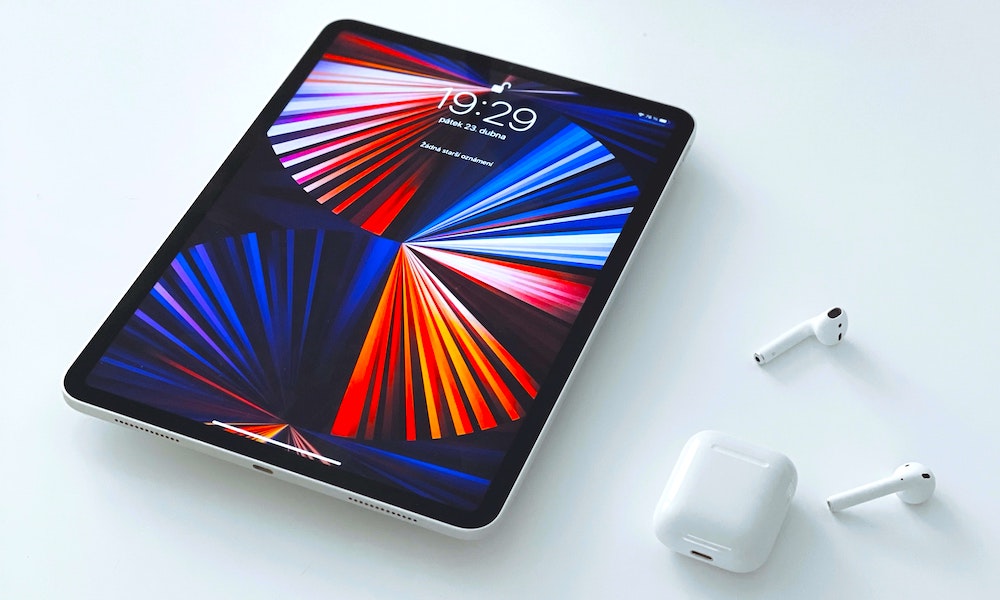Will Apple’s ‘iPad Air 5’ Get an OLED Display Before the High-End iPad Pro?
 Credit: David Å vihovec / Unsplash
Credit: David Å vihovec / Unsplash
Toggle Dark Mode
We’ve been hearing rumours over the past few months that Apple’s ultimate game plan for its higher-end iPad models is to move them to OLED displays. While it hasn’t been clear when or how that may happen, a new report suggests the much better display technology could come to the next iPad Air even before it lands on the more premium iPad Pro.
Of course, Apple has already equipped the 12.9-inch iPad Pro with a leading-edge Retina Display XDR based on mini-LED technology, but it remains a bit of a mystery what the plan is for its smaller 11-inch counterpart.
A rumour earlier this month suggested that Apple could skip Mini-LED entirely and go straight to OLED on the 11-inch iPad Pro, but now a new report from The Elec is mixing things up a bit.
According to supply chain sources, Apple’s 10.86-inch “iPad Air 5” will be the “first ever OLED iPad,” and it will arrive sometime in 2022 — up to a year ahead of the first OLED-equipped iPad Pro models.
While The Elec doesn’t call out this first OLED-equipped iPad model by name, the specs imply that it’s the next-generation iPad Air, rather than the iPad Pro.
According to the report, “Apple is planning to launch an 11-inch OLED iPad and a 12.9-inch OLED iPad,” in 2023, which certainly sounds like a description of Apple’s two flagship iPad Pro models.
That said, it also appears that Apple has better display technology in mind for the iPad Pro lineup. According to the report’s sources, the 2022 “iPad Air 5” will use a rigid OLED display, which typically “uses glass substrates and glass encapsulation.”
However, the display will also include thin-film encapsulation (TFE) technology that’s typically only found on more expensive flexible OLED panels, which “stacks organic material and inorganic material in alternatively in layers to protect the organic material from water and oxygen.”
First Rigid OLED Display
If true, this would be the first time that Apple has used a rigid OLED display in one of its products. Even the original 2015 Apple Watch — the first Apple device to include OLED technology — used a flexible OLED panel developed by LG Display.
All OLED iPhone models also use the flexible technology, since it allows for more design freedom and thinner bezels.
However, since rigid OLED is considerably cheaper, it makes sense that Apple would choose to go in this direction with its mid-tier iPad Air. However, it’s otherwise expected to use the same low-temperature polycrystalline silicon (LTPS) technology as current iPhone models.
On the other hand, the iPad Pro models coming in 2023 will not only move to flexible OLED panels, but also shift to the same low-temperature polycrystalline oxide (LTPO) display technology that’s expected to arrive in this year’s iPhone models.
This would effectively put the latest iPhone display technology about 18–24 months ahead of the corresponding iPad upgrade. The 2022 iPad Air would feature the same basic OLED technology that’s been used since the 2017 iPhone X, while the 2023 iPad Pro would basically adopt this year’s “iPhone 13” displays.
Since the entire iPad Pro lineup has featured Apple’s faster 120Hz ProMotion display, it stands to reason that it’s going to have to be able to produce an equally fast — and affordable — OLED display before it’s ready to add it to future iPad Pro models.
What remains less clear is whether this means we’ll have to wait until 2023 before we see any new iPad Pro models. It’s not entirely out of the question, since the iPad Pro family has traditionally been on an 18-month release cycle, but Apple also shook things up this year with the 2021 iPad Pro.
On the other hand, Apple has already moved to Mini-LED in the 12.9-inch iPad Pro, leaving the 11-inch model with the same LCD technology that’s been used since at least 2018. This leaves the possibility that we could see the smaller iPad Pro get a mini-LED upgrade between now and 2023, but it’s definitely starting to sound like Mini-LED really is just a stepping stone, with OLED as the ultimate end-game for Apple’s iPad lineup.
[The information provided in this article has NOT been confirmed by Apple and may be speculation. Provided details may not be factual. Take all rumors, tech or otherwise, with a grain of salt.]






